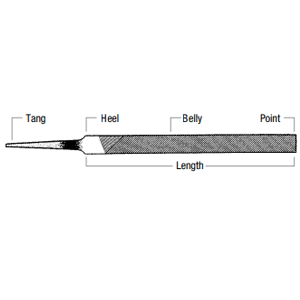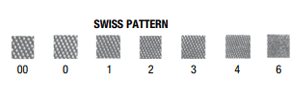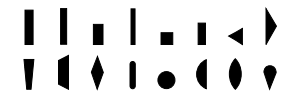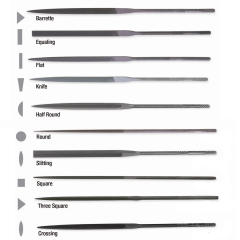Choosing an Swiss Pattern FileSelecting the proper file for your application is essential if your going to achieve the desired result for your job. When selecting the proper file you most consider its shape, size, tooth type, and coarseness. The size and the coarseness of the file are directly related. Larger files will remove more stock but will also leave your project with a coarse finish, while smaller files will remove less stock, but will leave a finer, smoother finish. | Parts of the File- Length is measured exclusive of tang, from point to heel,unless specified otherwise
- Desired stroke length, type of material and size will determine length required
|  × × | Kinds of TeethSINGLE-CUT- Single set of parallel, diagonal rows of teeth
- Single-cut files are often used with light pressure to produce a smooth surface finish or to put a keen edge on knives, shears or saws
|  |
| Coarseness- Swiss pattern files are available in seven cuts: No. 00, 0,1, 2, 3, 4, and 6
- The degree of coarseness is greater in longer files, but differences between bastard, second and smooth are proportionate
|  | Shape- Area to be filed will determine specific cross-section (round, square, flat, etc.) to be used
|  × × |
|











